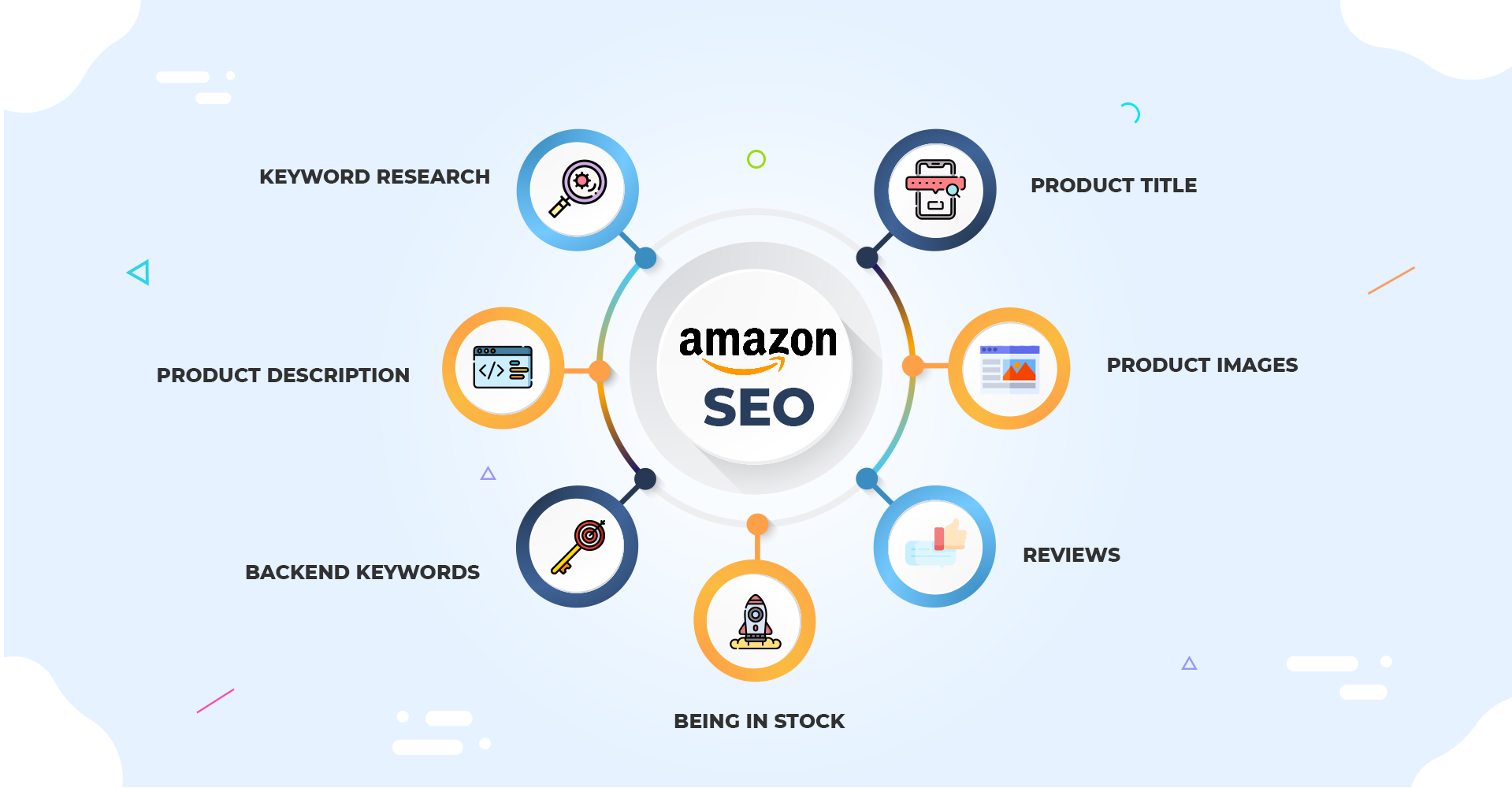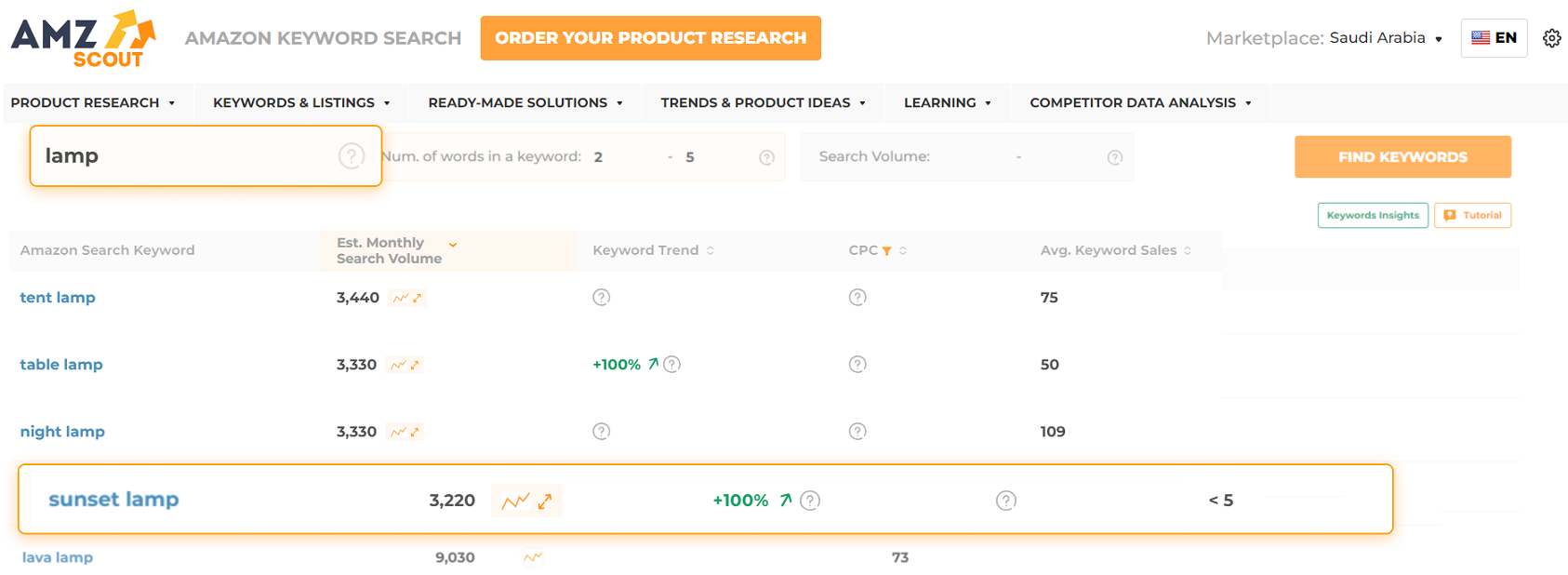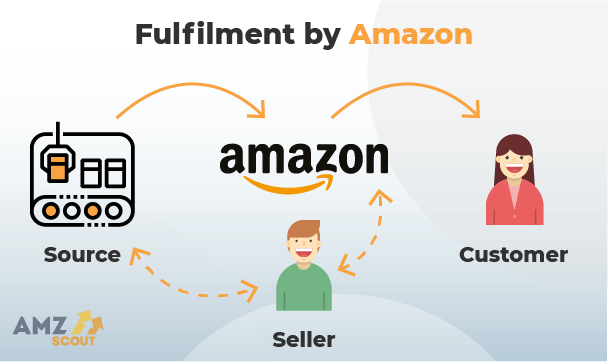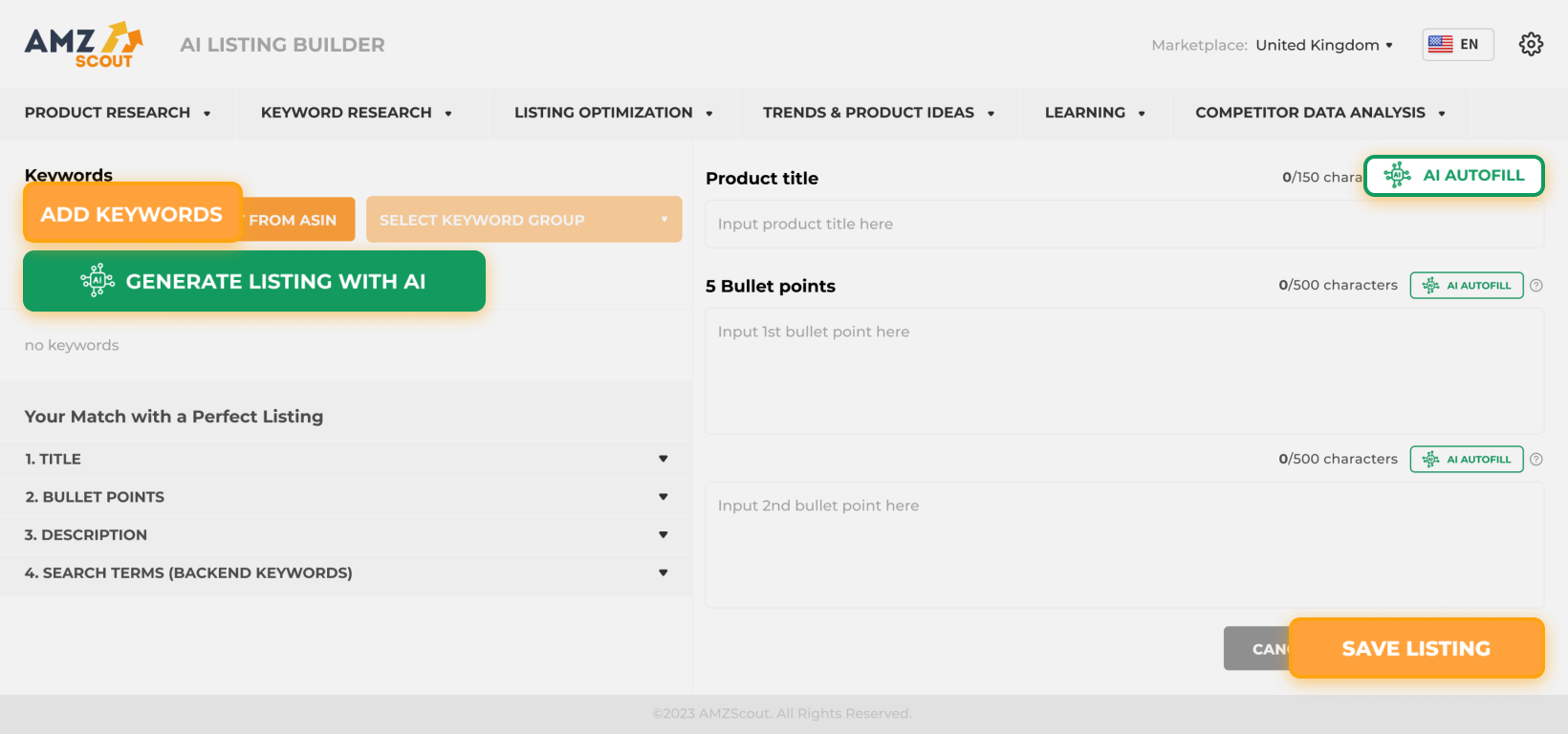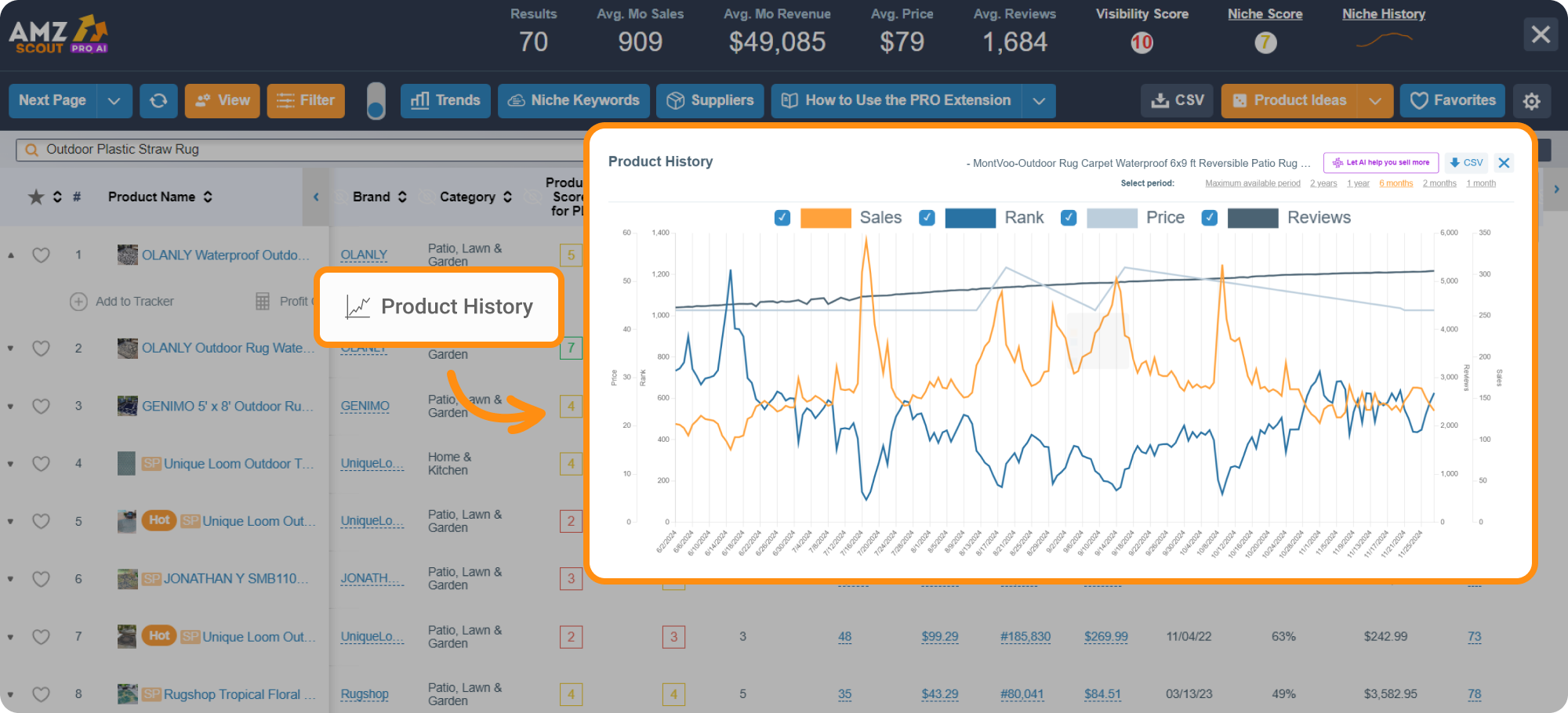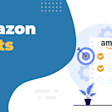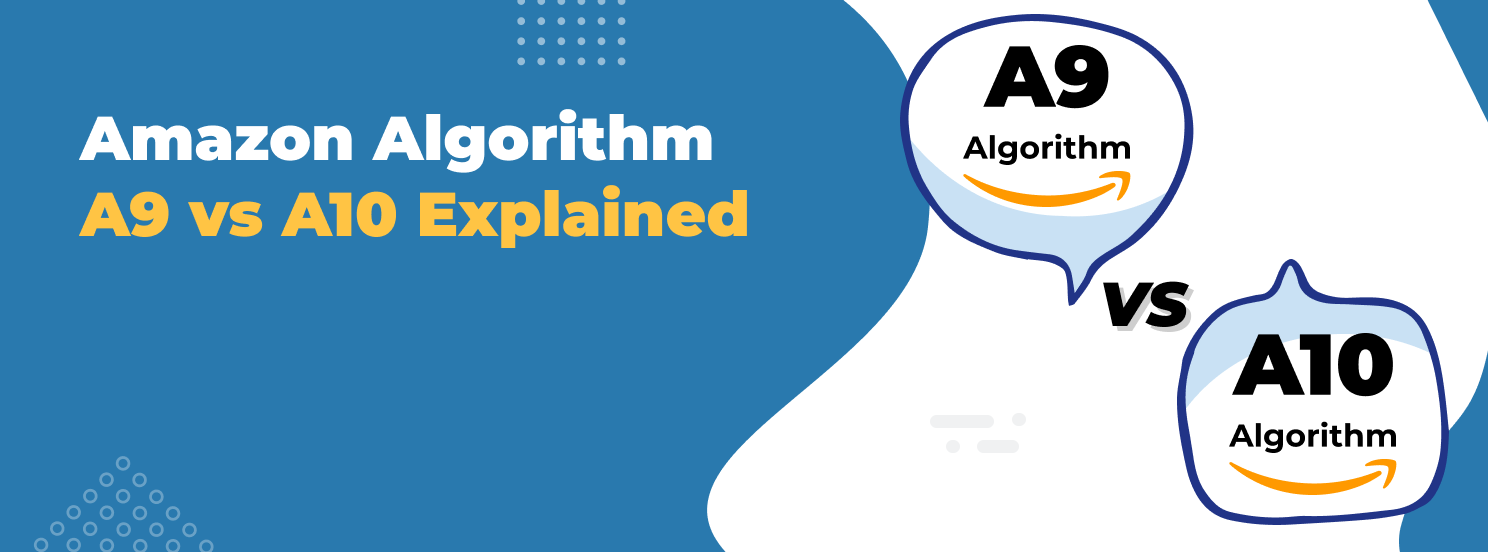
Amazon A10: Amazon Algorithm Overview & Optimization Guide
The Amazon algorithm is the backbone of the platform’s discovery system, and determines which products appear in search results. Over time, the algorithm has evolved from the A9 to the A10 version, with changes that can significantly impact product visibility. To rank higher, it’s important to understand how the algorithm works so you can optimize your product page accordingly.
In this article, we’ll explore how A10 works and share actionable tips to boost your search optimization results.
Table of contents
How Does the Amazon Search Algorithm Work?
Amazon’s search algorithm determines which products appear in search results when a customer enters a query. The algorithm uses a variety of factors (such as keyword relevance, price, and more) to rank listings and ads, ensuring the most relevant results are displayed based on user intent. In 2021, Amazon introduced the latest update, A10, which replaced the previous A9 algorithm.
In the next section, we’ll explore the top factors influencing your ecommerce performance and how to leverage them for better results.
What Are the Key Ranking Factors in the Amazon Algorithm?
Amazon’s algorithm uses various factors to determine each product’s ranking. Even though all details aren’t disclosed, below we’ll share the key elements that play a crucial role:
Search Relevance & SEO
While the A10 algorithm doesn't rely solely on keyword use when assessing product listings, search relevance remains a core ranking factor. The keyword algorithm helps Amazon understand what your product is about and how well it aligns with customer search queries.
By identifying the most relevant and effective keywords and incorporating them into your listings and ads, you can improve your chances of reaching your target audience. AMZScout’s Keyword Search can help you find high-impact keywords quickly.
Here’s how to do keyword research using the tool:
1. Go to the Keyword Search page. Enter your email address to start a free trial.
2. Search for keywords. Enter any product name or a related phrase in the search bar. You can also specify optional criteria like keyword count, if necessary.
3. Get a keywords list. Click "Find Keywords" and examine the search volume, trends over time, and assess average monthly sales for relevant products on the first page of search results.
Note: When considering PPC, it's important to check the cost-per-click (CPC) to select keywords that balance search volume and cost.
Selecting relevant keywords for your listings and ads is crucial to ensure your listing’s visibility and cost-effectiveness. Irrelevant keywords should also be added to a blacklist to avoid adding up unnecessary marketing costs. Additionally, experimenting with different variations and synonyms can help find new keyword ideas.
Conversion Rate & Performance Metrics
Conversion rate is a key metric that signals how well your product meets customer needs, and a higher rate can improve your ranking. However, other factors (like order cancellations) also affect your account health and visibility. For a detailed guide on key metrics, check out this article. Driving external traffic to your Amazon listings can have a significant impact on your sales performance. According to Seller Labs, sellers who leverage traffic from outside Amazon see up to a 25% higher conversion rate compared to those relying solely on internal Amazon traffic. This highlights the importance of diversifying your traffic sources to attract a wider and more engaged audience.
Dynamic Pricing & the Buy Box
Pricing is crucial for securing the Featured Offer (Buy Box), which is important because this directly influences your visibility and sales on Amazon. Amazon’s Automate Pricing tool helps you stay competitive by adjusting your prices automatically in real time, which improves your chances of winning the Buy Box. This, in turn, can help boost your rankings, as Amazon’s algorithm aims to offer the best price and value to customers.
Fulfillment Method & Shipping
Amazon places a high priority on customer satisfaction, which is largely influenced by shipping speed and reliability. As a result, Amazon’s algorithm favors sellers who use the Fulfilled by Amazon (FBA) program. FBA not only ensures fast, reliable delivery, but also grants Prime eligibility, which can significantly increase sales by expanding your product's reach to more customers.
External Traffic and Off-Amazon Signals
The A10 algorithm considers external traffic from sources like social media, blogs, YouTube, and more. Campaigns that utilize platforms like TikTok, Google Ads, or influencer marketing often see much higher engagement. In fact, these strategies have reported conversion rates of up to 58.6%, demonstrating that external traffic tends to include warmer, more motivated leads who are ready to purchase. Investing in high-quality external traffic can therefore directly boost both sales and your product’s performance in Amazon’s A10 algorithm.
Here’s how to boost external traffic:
Leverage social media: Promote your products on platforms like Instagram, Facebook, and TikTok to direct traffic to your Amazon listings.
Collaborate with influencers: Partner with influencers to create content around your products, increase awareness, and drive traffic to your listings.
Participate in online communities: Join relevant online forums or groups (e.g., Reddit, Quora, or niche Facebook groups) where you can promote your products.
Building external traffic through social media, influencers, and content creation can improve your product’s visibility and overall performance on Amazon.
By aligning your strategy with Amazon’s algorithm, you can enhance your sales and visibility, paving the way for long-term success.
How to Boost Your Rank in Amazon’s Algorithm?
Several strategies can help boost your ranking in search results. Here are the top five:
Optimize Your Product Listing
To rank higher on Amazon, it’s vital to optimize your product listings. Effectively-optimized listings not only attract more visitors but also increase your chances of higher sales. Here’s what to focus on:
Title: Craft a clear and compelling title that incorporates relevant keywords while remaining engaging and informative.
Bullet points: Use up to five bullet points to showcase the product's key benefits and unique features, while blending in keywords in a way that feels natural.
Description: Write a persuasive product description that emphasizes your product’s advantages over those sold by competitors, ensuring that key search terms are seamlessly integrated.
Backend keywords: Add hidden backend keywords to improve your product’s discoverability through Amazon’s search engine. Also, you must stay within Amazon’s character limits and guidelines while creating engaging content. This can be time-consuming, but specialized tools can simplify the process, ensuring your listing is both optimized and compliant.
Crafting a Compelling, SEO Listing
Creating an effective Amazon listing requires both the ability to craft persuasive copy and the skill to choose impactful keywords. The AMZScout AI Listing Builder streamlines this by quickly generating optimized content.
Here’s how to use it:
1. Go to the AMZScout AI Listing Builder page.
2. Add keywords. This can be done using one of two methods:
Enter terms you’ve gathered from prior research manually.
Pull keywords automatically by entering competitors’ ASINs, saving time and tapping into proven strategies.
3. Generate content. Hit “AI Autofill” to instantly create titles, bullet points, descriptions, and keywords that meet Amazon’s character limits while embedding your keywords seamlessly.
Note: You may need to tweak the final text slightly to suit your audience—use the checklist located in the bottom-left corner for Amazon best practice tips.
4. Finalize your listing. Save the text to boost your store’s visibility and drive sales.
An SEO listing increases visibility, helping your product rank higher and stand out in a crowded market.
Use High-Quality Images and Videos
Another effective strategy to improve your product ranking is using high-quality visuals, as Amazon’s algorithm recognizes that these will enhance sales potential, so they prioritize these kinds of listings. Here are a few tips:
Review Amazon’s standards: Ensure that your images meet Amazon's requirements, including high resolution, clear background, and proper product representation.
Use A+ Content: Take advantage of A+ Content to add enhanced visuals and detailed descriptions that highlight your product's features.
Create separate images and videos: For each pattern, color, or variation, take individual photos and videos so customers can clearly see all options.
Show products in use: Display your product from multiple angles and in real-life scenarios, so customers can visualize how they would use it.
Also, since customers are drawn to videos, including these can significantly increase engagement and help boost your product's appeal.
Encourage Customer Reviews
Positive reviews can significantly boost your ranking in search results. However, only about 10% of customers leave reviews, which can be especially challenging for new brands without any feedback to build trust. Here are some strategies to encourage more reviews:
Amazon Vine: Enroll in Amazon Vine, which allows verified buyers to review your products and help build credibility.
“Request a Review” Button: Use Amazon's "Request a Review" button to send review requests to customers in compliance with Amazon’s guidelines.
Improve your product and services: To get positive reviews, focus on delivering high-quality products and excellent customer service. Review customer feedback regularly to identify areas for improvement and leverage insights from competitors’ reviews to stay ahead of the curve.
Note: Analyzing hundreds (or thousands) of reviews manually can be time-consuming. To save time, consider using an AI Review Analyzer. Simply enter your competitor’s ASIN, and the tool will provide key insights, highlighting what customers love and what they find frustrating.
By reviewing these insights periodically, you will understand how to improve your product offerings and business strategy to better meet customer expectations, reduce common mistakes, and ultimately increase conversions.
Boost Sales Velocity
Amazon prioritizes products that sell quickly, so increasing sales velocity is crucial for improving your ranking. Here are a few strategies to help you boost sales:
Run promotions: Offer discounts or limited-time deals to create urgency. Make sure you have a professional seller account to access these promotional tools.
Use Amazon PPC: Leverage Amazon’s pay-per-click advertising to drive traffic to your listings, increasing visibility and boosting sales.
Drive external traffic: Collaborate with bloggers, influencers, or social media platforms to bring external traffic to your Amazon listings.
Bundle products: Create product bundles to offer value and increase your average order value. Bundling can attract more buyers looking for deals.
Participate in Prime Day: As an FBA seller, you can take advantage of Prime Day to boost sales through limited-time offers and exclusive deals.
Ensure that your sales are profitable by checking your margins regularly and planning your inventory carefully to avoid stockouts and overstocking.
Monitor Inventory & Stay In-Stock
Running out of stock negatively impacts your rankings, as Amazon’s algorithm prefers products that are consistently available. Stockouts can also hurt your sales history, which is an important ranking factor, leading to long-term visibility issues.
Here are a few tips for improving your performance:
Use Amazon FBA: With Amazon FBA, you can set up automatic replenishment for your products. This helps to ensure that your inventory levels remain steady.
Use an inventory system: Implement an inventory management system to track stock levels in real time and avoid running out of stock during peak sales periods.
Study historical sales: Use the AMZScout PRO AI to analyze past sales data and forecast demand, allowing you to plan ahead and source products more effectively.
With time, you'll learn which strategies work best and how to refine your approach for optimal results. Analyzing and adapting your tactics continuously will help you stay competitive and maximize your success on Amazon.
Common Mistakes to Avoid
Now that we've covered some best practices, let's take a look at some common mistakes to avoid. Here are the most frequent errors to watch out for:
Keyword stuffing: Adding too many keywords to your product listings might seem effective, but it also hurts readability. Your content should be both optimized for the algorithm and compelling enough to convert customers.
Ignoring backend search terms: These hidden keywords help the algorithm understand your product and increase visibility without compromising readability.
Poor listing quality: A low-quality listing includes incomplete information, poor visuals, and other issues that can turn off both Amazon's algorithm and customers, leading to higher returns and lower sales.
Not optimizing for mobile: With more customers shopping on mobile devices, it's crucial that your listings are mobile-friendly. Otherwise, you risk hurting conversions and negatively impacting your
product ranking.
Optimizing your listing is an ongoing journey. To stay ahead of the competition, make it a habit to refresh and fine-tune your content regularly for maximum impact.
Now, let’s take a closer look at the differences between A9 and A10 to understand what sellers need to focus on for better performance.
A9 vs. A10: Differences and Similarities
The key difference between Amazon's A9 and the newer A10 algorithm is that A10 places greater emphasis on seller performance, external traffic, and customer engagement. However, since both aim to deliver the most relevant products to shoppers, they continue to share a core principle, which is the importance of keywords.
What Has Remained the Same?
Reviews: Positive customer feedback continues to impact rankings.
Price: Competitive pricing, guided by Amazon's pricing algorithm, is still a key factor.
Keywords: Relevant keywords in listings are still crucial for visibility.
Sales: Strong sales performance continues to influence a product position among search results.
What’s New?
AI personalization: A10 uses AI to make listings more interactive, which helps to engage customers and influence content.
External traffic: Social media and influencer-driven traffic now affect rankings.
Personal metrics: Metrics like click-through rates and customer interactions are now factored into rankings.
Conclusion
To improve your visibility in Amazon's search engine results, you need to understand how the algorithm ranks products, and optimize your listings and ads accordingly, with keywords playing a crucial role. Consider using the AMZScout toolkit to enhance your SEO by identifying the best keywords for your product. This enables you to increase the chances of your products standing out in the competitive Amazon marketplace and maximize your marketing efforts.
FAQs
What is the current Amazon algorithm?
In 2025, Amazon’s algorithm is A10, which replaced the previous A9 version. A10 places greater emphasis on organic engagement, external traffic, and product SEO relevance. As the algorithm is continuously updated, it’s important to stay adaptable and make changes to your listings and ads to keep up with these updates.
Why is Amazon SEO important?
Amazon SEO is crucial because it determines how visible your products will be in Amazon's search results. Higher visibility leads to more clicks, conversions, and ultimately, sales, as customers rarely scroll past the first few pages. You can check here to see the key factors that influence your product position on Amazon.
What is the Amazon product listing algorithm?
The Amazon product listing algorithm ranks products based on factors like relevance, performance, and customer satisfaction. It analyzes product titles, descriptions, reviews, ratings, sales volume, and other metrics to determine search result rankings. Optimizing these elements can help to improve your product visibility.
What recommendation algorithm does Amazon use?
Amazon uses an AI-driven recommendation engine that suggests products based on customers' browsing and purchasing history, along with the behavior of similar users. The algorithm also factors in product relevance, reviews and ratings, pricing, and other factors to recommend the best items to each shopper.
